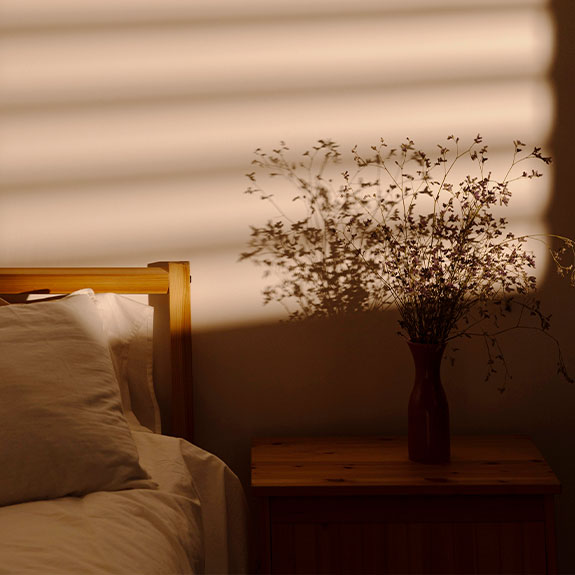Natural light is an invaluable resource in any home. Not only does it improve the ambiance and aesthetics of spaces, but it also has multiple benefits for health, well-being and energy savings. Making the most of sunlight can reduce electricity consumption, improve mood and create a feeling of greater spaciousness in rooms.
Benefits of natural light in the home
- Improves well-being and health: Regulates circadian rhythm, helps to sleep better and reduces stress.
- Energy savings: Decreases dependence on artificial lighting, reducing electricity consumption by up to 30%.
- Greater sense of spaciousness: Well-lit spaces appear larger and more inviting.
- Improves productivity: Well-lit environments increase concentration and creativity.
- Sustainability: Less use of artificial light means less environmental impact.
Practical tips to take advantage of natural light
1. Use light colors on walls and ceilings.
Light colors reflect natural light better, making spaces appear brighter and more spacious.

2. Install large windows and glass doors.
Large windows allow for better light entry. Opt for glass doors to improve lighting between rooms.
3. Place mirrors strategically
Mirrors help reflect light, distributing it throughout the room and maximizing brightness.
4. Distribute the furniture correctly
Avoid placing bulky furniture near windows so as not to block natural light.
5. Use translucent curtains and blinds.
Light curtains and screen-type blinds allow light to pass through without losing privacy.
6. Take advantage of skylights and solar tubes.
If possible, install skylights or solar tubes to increase lighting in interior rooms.
7. Keep windows clean and clear
Clean windows allow more light to pass through. Avoid placing objects in the window frames.
8. Opt for reflective flooring and materials
Light-colored floors and materials with a glossy finish can reflect light better.
Structural reforms and improvements to enhance natural light
1. Replacement of walls with glass
Replace solid walls with glass to allow light to flow between spaces.
2. Installation of skylights and skylights
Skylights are an excellent option for increasing natural light in dark rooms.
3. Enlargement of windows in renovations
If you are in the process of renovating, consider enlarging or relocating your windows to maximize light.
Recommended products to improve daylighting

- Reflective paints for walls and ceilings.
- Double-glazed windows for greater energy efficiency.
- Translucent curtains and blinds.
- Decorative mirrors and glass panels.
- Glass doors for interiors.
How to avoid the loss of natural light at home
Just as important as knowing how to take advantage of natural light is to avoid wasting it due to wrong decisions in the decoration and distribution of the home. Often, small mistakes can cause natural lighting to be significantly reduced, resulting in darker spaces and a less spacious feel.
One of the main factors that affect the brightness in a home is the excessive use of dark colors on walls, ceilings and floors. Although they can provide an elegant and sophisticated touch, these tones absorb light instead of reflecting it, which reduces the feeling of brightness in the room. To counteract this effect, it is advisable to use them only in decorative details and opt for a base in light colors that maximize the diffusion of light.
Furniture layout also plays a key role in the entry of natural light. Large, heavy furniture placed near windows can block the passage of light and cast unwanted shadows. Choosing lighter pieces, with light-toned finishes and reflective surfaces, helps to maintain brightness throughout the room.
Another key aspect is the correct organization of space. A home overloaded with decorative objects, cluttered bookshelves and thick curtains can significantly reduce available natural light. Keeping areas near windows uncluttered and choosing light fabrics for curtains allows light to be distributed more evenly.

Artificial lighting as a complement to natural light
Although natural light is the most efficient and healthy source of illumination, there are times of the day when it is necessary to supplement it with artificial light. The key is to choose appropriate light sources that maintain a pleasant atmosphere without generating excessive energy consumption.
LED bulbs are an excellent choice for lighting the home in an efficient and sustainable way. Opting for warm tones in rest areas, such as the bedroom or living room, can generate a feeling of comfort similar to natural light. In work spaces, such as the kitchen or office, neutral lights help improve concentration without altering color perception.
The distribution of lighting is also a key factor. Rather than relying solely on a central lamp in each room, it is advisable to incorporate different points of indirect light. Wall sconces, LED strips on shelves or recessed spotlights can help create more balanced and even lighting throughout the home.
In addition, to optimize energy consumption, light sensors can be installed to regulate the intensity according to the amount of natural light available at any given moment. In this way, it is possible to reduce the use of artificial lighting when it is not necessary and make the best use of natural resources.
What are the best colors to enhance natural light?
White, beige, light gray and pastel tones are ideal for reflecting light and making spaces look brighter.
How can I light a room without windows?
You can use solar tubes, strategic mirrors and reflective materials to enhance the lighting.
What type of curtains allow light to pass through without losing privacy?
Linen, gauze or screen curtains are excellent choices.
Do mirrors really help to distribute light?
Yes, strategically placed they can reflect natural light and improve the illumination of dark spaces.


